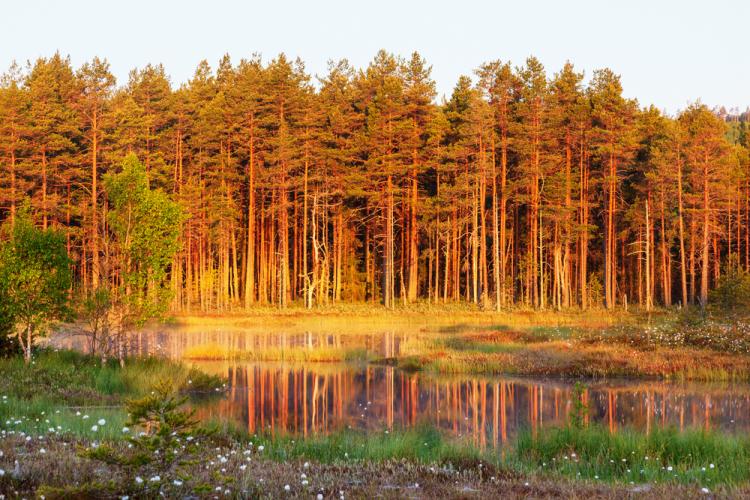Riparian Buffers
The lands that surround lakes and streams, often referred to as riparian areas, consist of complex habitats that provide food, breeding grounds and movement corridors for many wild creatures. A large percentage of threatened and endangered wildlife depends on riparian areas for survival. Riparian areas also play an important role in protecting waterways from erosion, sedimentation and other forms of pollution. Because of their importance in woodland ecosystems, these lands are the site of special best management consideration, and can be designated as Riparian Management Zones or RMZs. Riparian Management Zones, sometimes called Streamside Management Zones, are buffer areas of native vegetation that envelop and safeguard woodland waters. Within RMZs, management activities are modified to protect water quality and important wildlife habitat.
The role of Riparian Management Zones is to:
- Act as a filter for runoff. As water flows over vegetated soil and duff, it slows down, allowing particulates to settle into the ground. RMZs thereby remove sediment and other pollutants from water before it reaches streams or lakes.
- Absorb runoff. Plants, their fallen leaves and rich soil in riparian zones absorb much of the surface water moving over the forest ground during rainfall and snowmelt. This protects streams and lakes from excessive runoff and helps replenish groundwater.
- Stabilize lakeshores and stream beds. Tree and other plant roots hold soil in place and help stabilize it against waves, currents and runoff that can erode shores and banks.
- Shade streams. Without trees to shade streams in hot summer months, their waters can become too warm for many aquatic species. Warmer water also holds less oxygen for fish species.
- Provide a foundation for the aquatic food chain. Fallen leaves and twigs are eaten by small aquatic organisms, which are then eaten by larger creatures and on up the food chain. Without streamside vegetation, a basic component of freshwater aquatic ecosystems is missing. Fallen logs and branches also provide habitat for fish, turtles and other wildlife.
Generally, the width of a Riparian Management Zone for lakes and for streams should be 100 feet, though some states offer different guidance on this. If the terrain is steep, subject to erosion, or significant timber harvesting is planned for the edge of the RMZ, the width should be larger to protect the water body. If you have threatened or endangered species living in your woodland riparian area, you may want to widen you RMZ as well–protecting that important habitat may be what allows these wild creatures to survive.
BMPs in RMZs
After you have taken a look at your woodland waters and identified Riparian Management Zones on your map, here are some Best Management Practices to keep in mind:
- Locate infrastructure outside of RMZs. Unless it cannot be avoided, roads, landings, skid trails, buildings and other construction should be sited outside of the RMZ boundary you have set.
- Don’t dispose of slash or waste from road construction within RMZs.
- Avoid soil exposure and compaction of soil within RMZs.
- Avoid operating equipment within RMZs. When equipment operation is necessary in a riparian zone, limit activity to the coldest months when the ground is frozen.
- Do not harvest timber within an RMZ. If you must harvest, do so selectively, and do not harvest woody material within 50 feet of the ordinary high water mark of a stream or lake.
- Promote long-lived native tree species in riparian zones.
- Do not use chemical fertilizers, pesticides or other hazardous materials inside of RMZs.
How can I get more tips?
It’s simple! Enter your email below.

